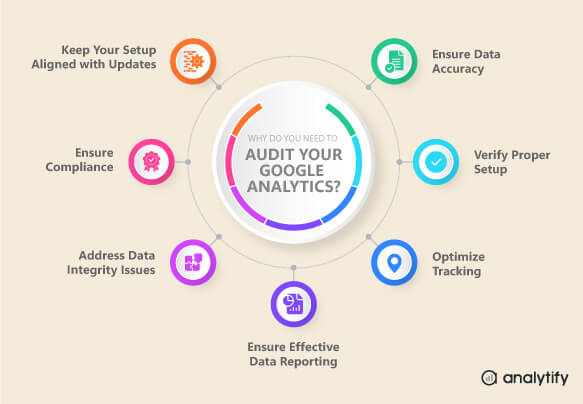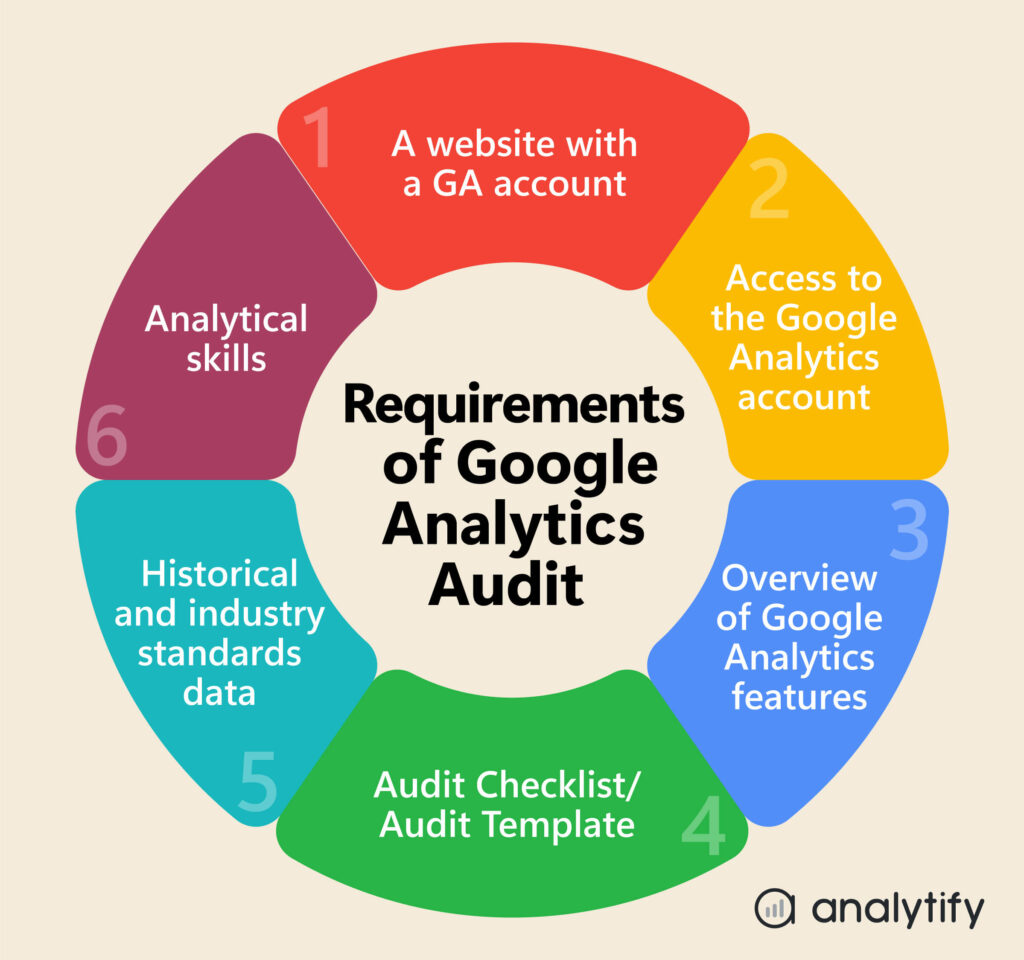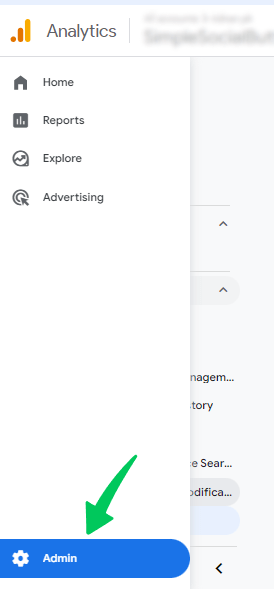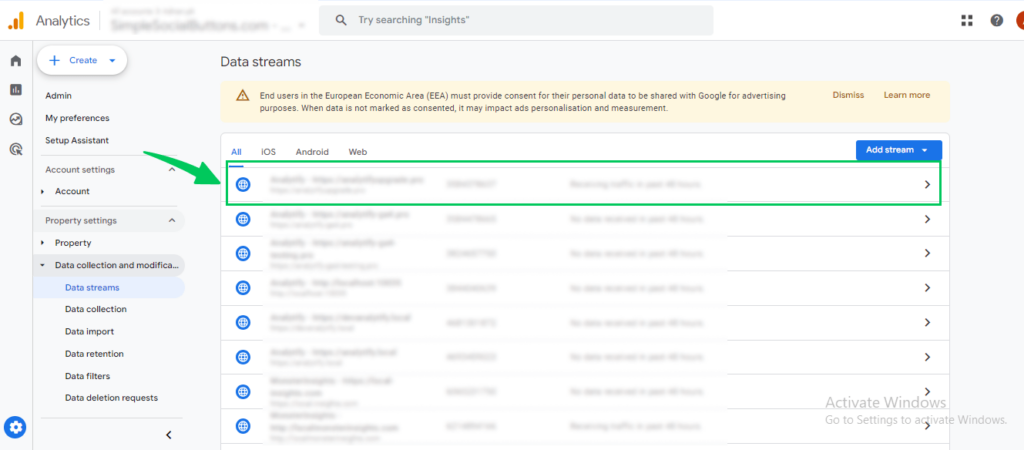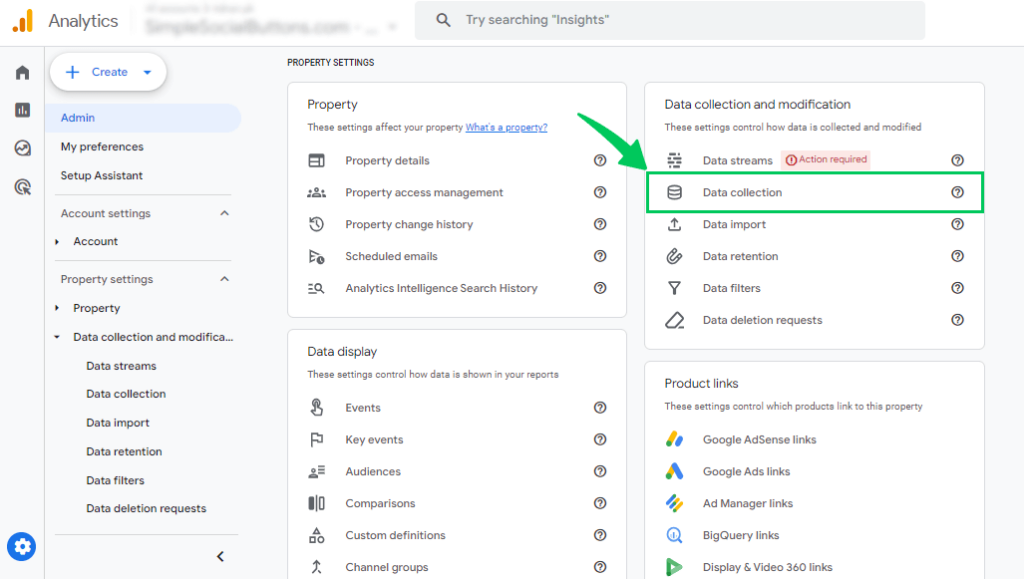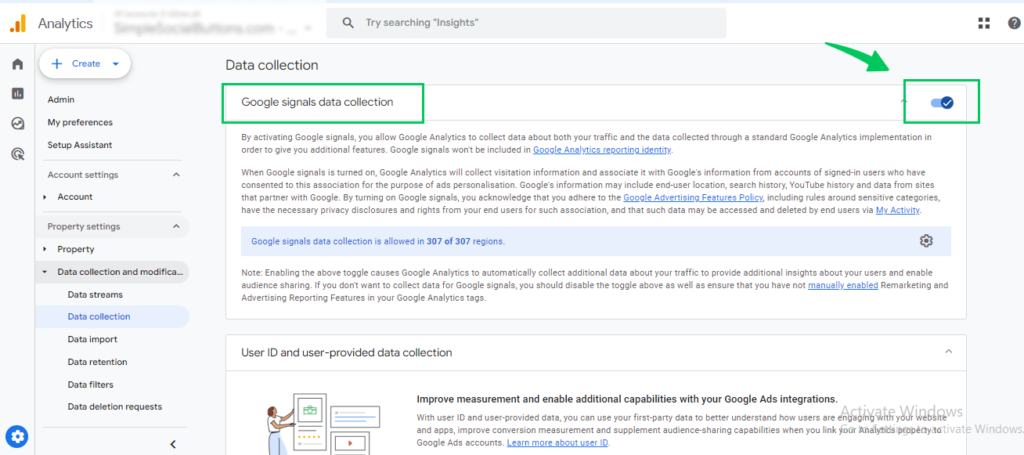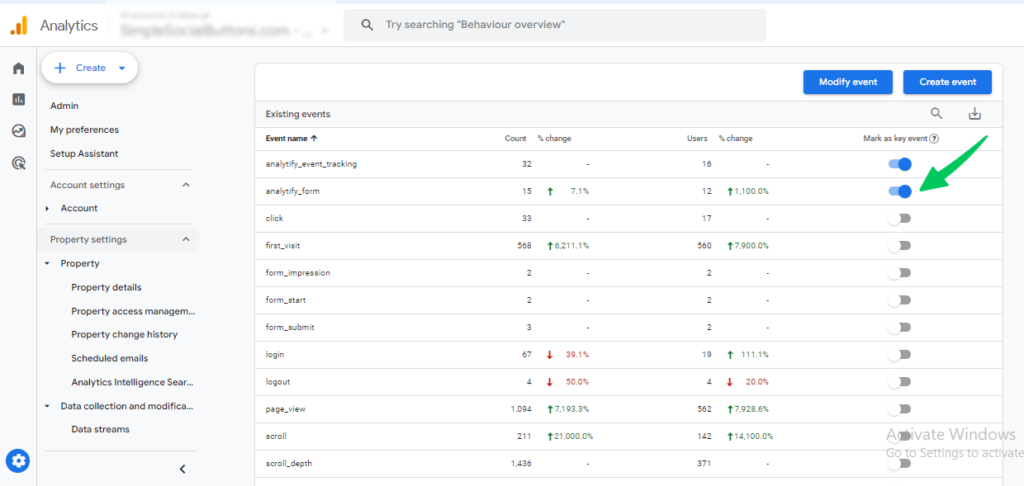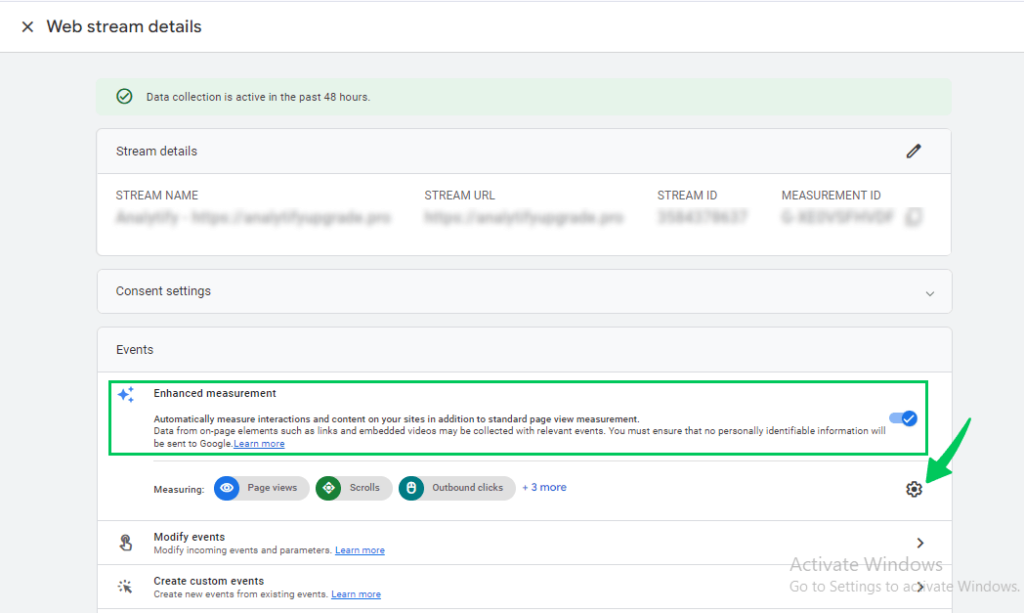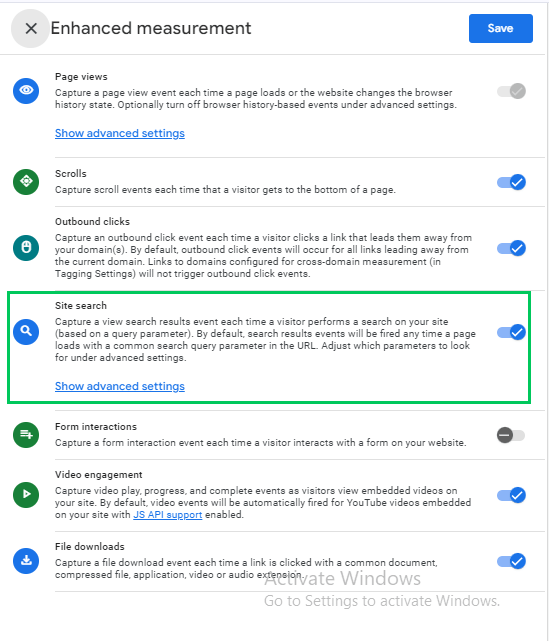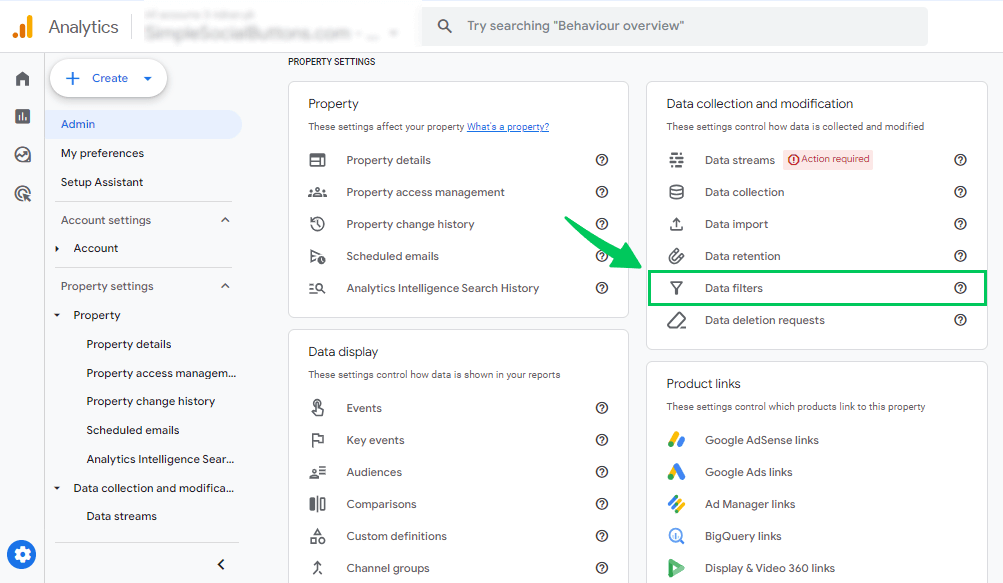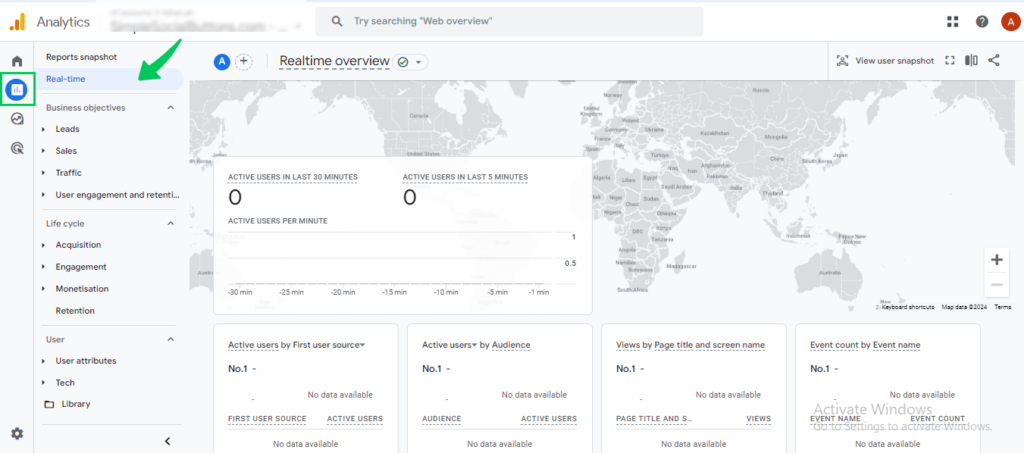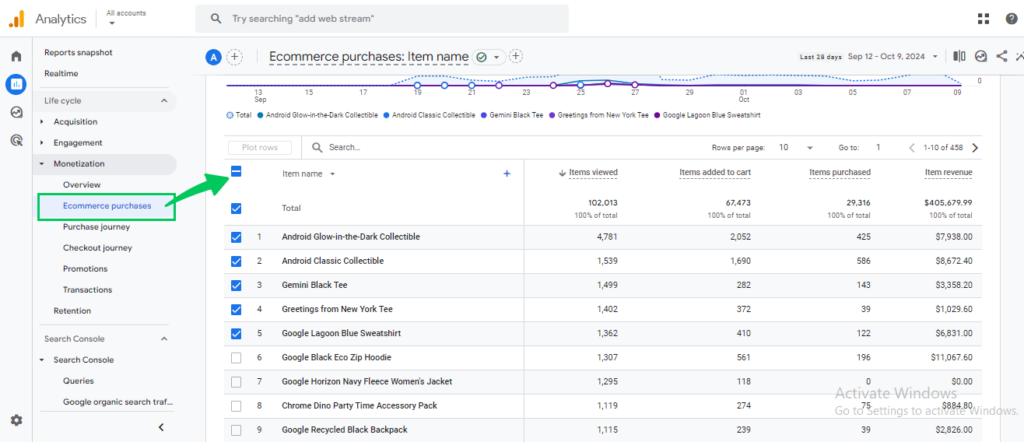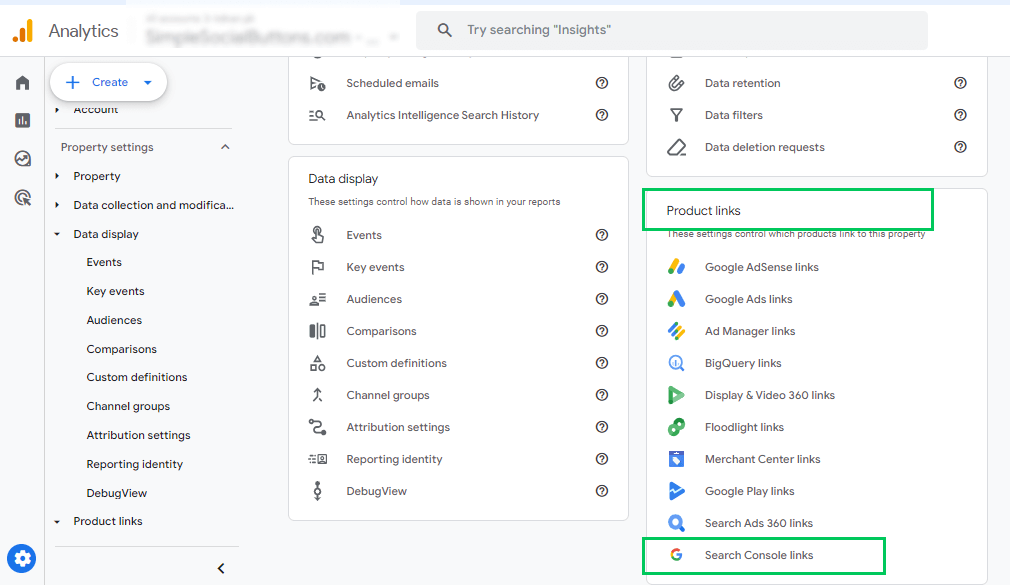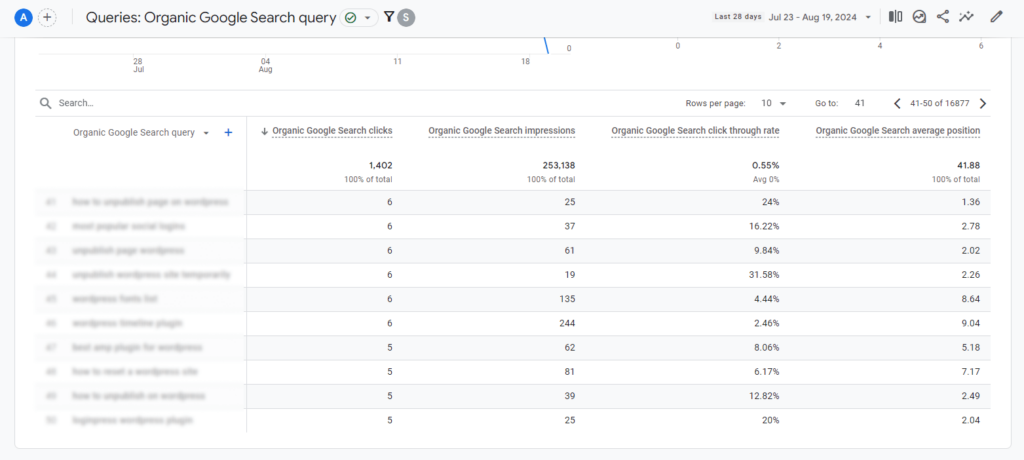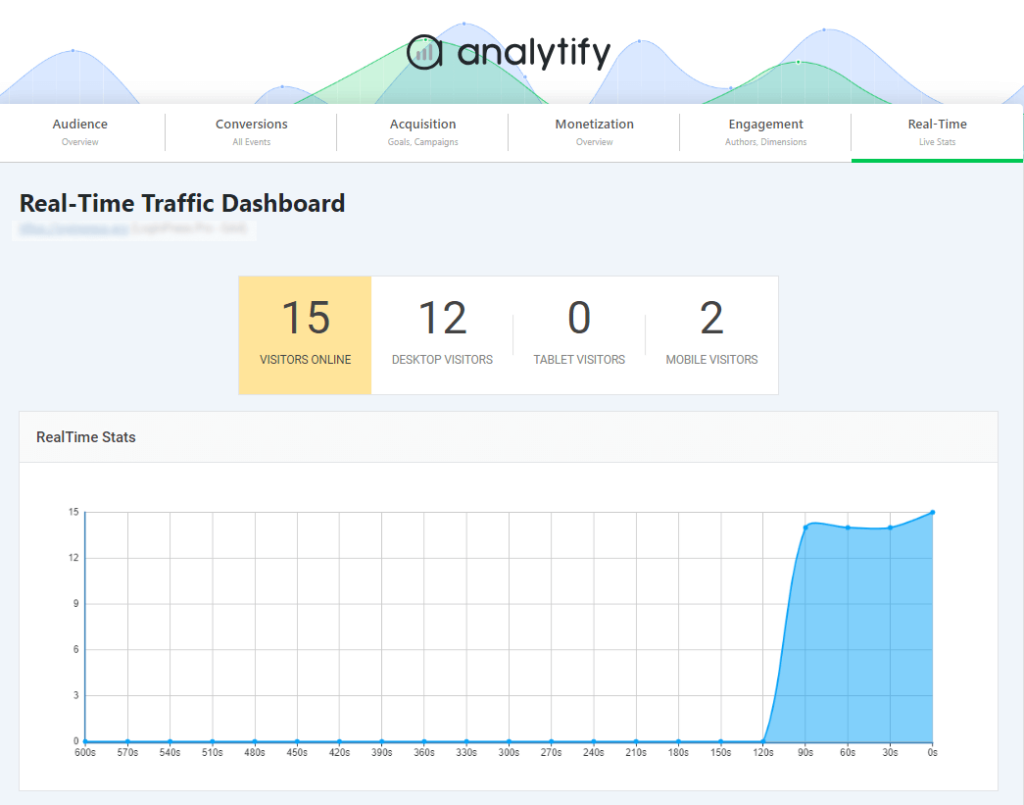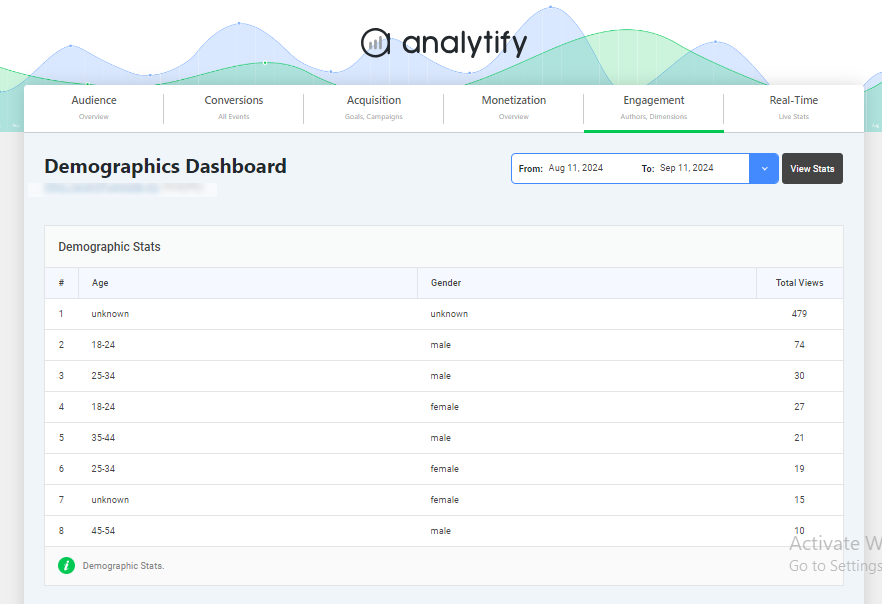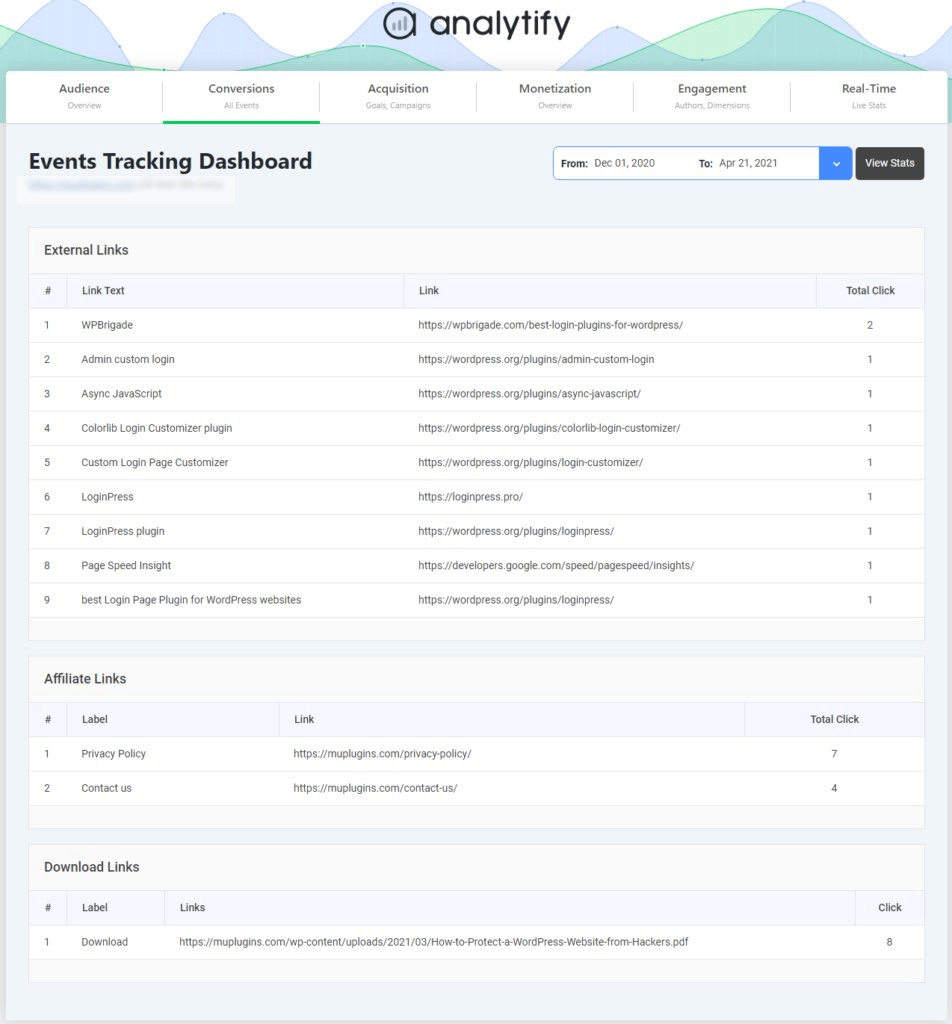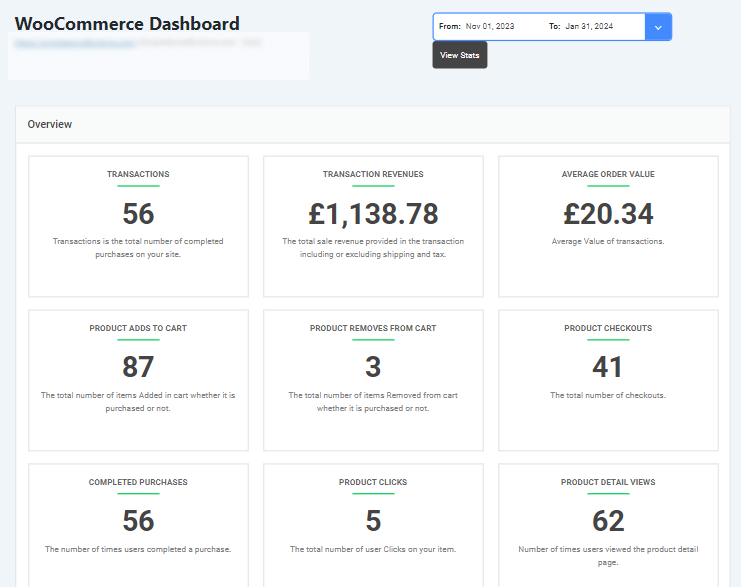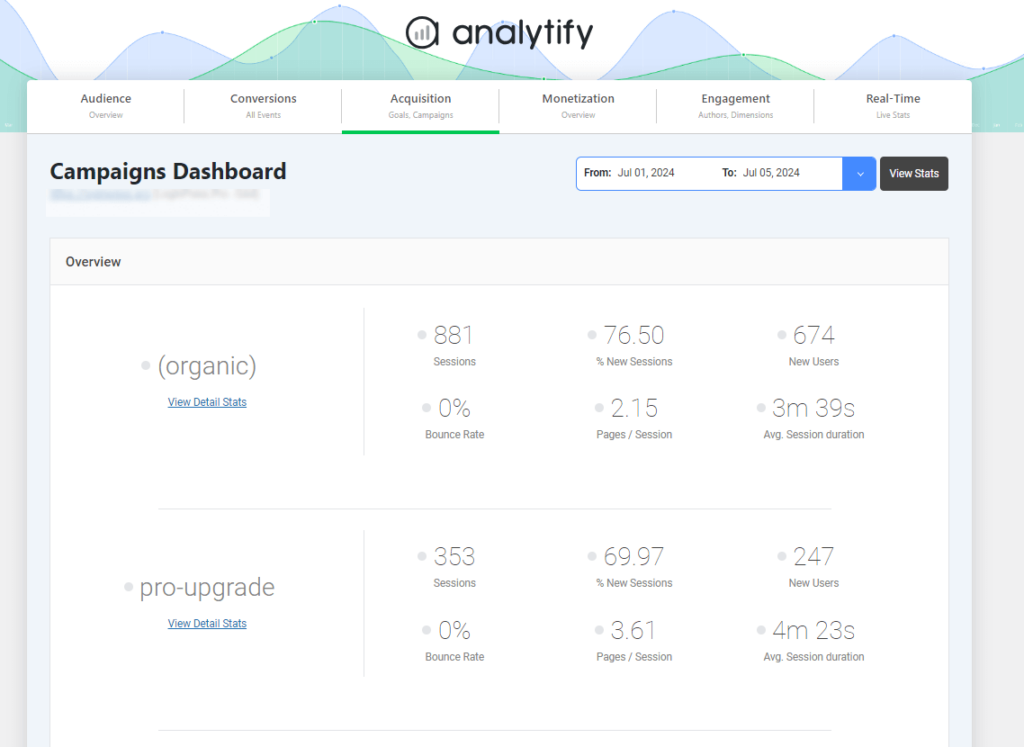
Google Analytics Audit (A Complete Checklist 2025)
Are you sure your Google Analytics is tracking the right data? A Google Analytics Audit is essential to ensure your data collection is accurate and aligned with your business goals. By regularly auditing your GA4 setup, you can identify and resolve issues that may distort key metrics.
This guide covers a detailed Google Analytics Audit Checklist with all the requirements for performing an audit, helping you ensure your GA4 Audit process is thorough and effective. You’ll also discover how tools like Analytify can simplify the process to optimize your analytics.
Let’s get started to learn how to audit Google Analytics!
Google Analytics Audit (TOC):
What is a Google Analytics Audit?
A Google Analytics audit is a thorough evaluation of your Google Analytics account and setup to ensure that it is correctly configured, accurately tracking data, and aligned with your business goals.
Auditing Google Analytics account involves reviewing account structure, tag implementation, data collection methods, and reporting settings to identify and resolve any issues that may impact the quality and reliability of your analytics data.
Regular GA4 audit also allow you to spot data inconsistencies, refine custom reporting, and ensure your analytics setup remains up to date with the latest Google Analytics features and best practices.
Why Do You Need to Audit Your Google Analytics?
Auditing Google Analytics account is important to ensure you are collecting accurate data that supports your goals. Over time, changes to your website, tracking implementation, or even updates within Google Analytics can lead to errors in the data you rely on. Conducting a regular google analytics audit helps maintain data quality.
Here are several key reasons for why Google Analytics 4 Audit is necessary:
- Ensure Data Accuracy: An audit helps identify and correct issues with data collection, such as tracking code errors or misconfigured settings, ensuring that the data you rely on is accurate and reliable.
- Verify Proper Setup: It ensures that your Google Analytics account, properties, and views are set up correctly and are aligned with your business objectives and reporting needs.
- Optimize Tracking: By reviewing your tag implementation and event tracking, you can optimize how interactions and conversions are recorded.
- Ensure Effective Data Reporting: Auditing helps ensure your reports and dashboards are configured to deliver meaningful data and support effective analysis.
- Address Data Integrity Issues: It helps to identify and resolve issues, such as spam, that can distort your data and impact your analysis.
- Ensure Compliance: Regular audits ensure your Google Analytics setup complies with data protection regulations like GDPR or CCPA, protecting user privacy and avoiding legal issues.
- Keep Your Setup Aligned with Updates: An audit helps you adapt your setup to maintain effective tracking and reporting as your business evolves or as Google Analytics updates its features.
You should perform a GA4 audit at least once or twice a year. However, if your website, business objectives, or Google Analytics features significantly change, more frequent audits may be necessary to ensure that your tracking and reporting remain accurate and effective.
For example, exporting your GA4 reports and converting them into Excel spreadsheets can facilitate deeper analysis and sharing across teams, especially when you need to convert PDF to Excel for more flexible data manipulation.
Requirements for Performing a GA4 Audit
To conduct a Google Analytics audit, you’ll need the following:
- A website with a GA4 account: You’ll need a website, either your own or your client’s, that is properly integrated with Google Analytics (GA4). This means ensuring that the GA4 tracking code is installed on all relevant pages across the site.
- Access to the Google Analytics account: Ensure you have the necessary permissions to view and analyze the account data.
- Understanding of Google Analytics features: Familiarity with the platform’s features and metrics is essential for accurate interpretation.
- Audit Checklist/ Audit Template: This can help you structure your analysis and ensure you cover all important areas.
- Historical and Industry Standards data: Access to previous months or years of data, combined with comparisons to industry competitors, provides valuable information about trends, performance, and relative standing.
- Analytical skills: The ability to interpret data and draw meaningful conclusions.
Google Analytics Audit (10-Point Checklist)
To ensure your Google Analytics 4 (GA4) setup collects accurate data, it’s essential to conduct a thorough audit periodically. An audit will help verify that your key metrics are being tracked and that your property settings align with your business goals.
Here’s a checklist for GA4 audit to ensure your GA4 is appropriately configured:
1. Check Whether the Default URL Is Set Correctly in GA4 Property
Ensuring that the default URL is set correctly in your GA4 property is crucial for accurate data tracking. This setting helps GA4 understand your website’s base URL, ensuring the data corresponds to the correct domain. An incorrect URL may lead to fragmented data in your reports, impacting accuracy.
To check the default URL:
- Navigate to Admin in GA4.
- Under the Property column, click on Data Streams.
- Select your web data stream.
- Ensure the URL is correct and properly formatted(e.g., “https://example.com”).
If the URL is incorrect, adjust it to match your website’s main domain to avoid any discrepancies in data collection.
2. Review the Enablement of Demographic and Interest Reports
Demographic and Interest Reports provide a valuable understanding of your audience. However, Google Signals must be enabled to access these reports in GA4. This feature utilizes data from Google accounts that have opted into ad personalization to offer detailed information about user demographics and interests. Ensure that Google Signals is activated for proper audience data collection.
Here’s how to enable it:
- Log in to your GA4 property.
- Navigate to Admin settings.
- Go to Data Collection.
- Click on Toggle under “Google Signals data collection” to enable it.
If not enabled, turn it on to collect demographic and interest data for more audience details.
3. Check if Bot Traffic Is Being Excluded
Known bot traffic is automatically excluded in GA4 to improve data accuracy. However, reviewing this setting and understanding its impact on your analytics data is important.
Key points about known bot traffic exclusion in GA4:
- Automatic Exclusion: GA4 automatically excludes known bot and spider traffic from your reports.
- No Manual Control: Currently, you cannot disable this bot traffic exclusion or view metrics on how much bot traffic has been excluded from your data.
- Data Accuracy: The exclusion helps improve the reliability of your analytics by focusing on genuine user interactions rather than automated traffic.
Confirming that this feature is functioning ensures your analytics data remains focused on fundamental user interactions.
4. Verify Time zone and Currency Settings
It’s essential to ensure that both the time zone and currency in your GA4 account are set correctly to reflect your target market. The time zone setting affects how data is recorded and displayed in your reports. In contrast, the currency setting ensures that monetary transactions are accurately tracked and displayed correctly.
Having the correct time zone and currency settings ensures that your reports align with your region and accurately track transactions. Misconfigurations can lead to discrepancies in reporting, especially in time-based and e-commerce data.
To set the correct time zone and currency:
- Go to Admin in GA4.
- Under the Property column, select Property Details.
- Check the Reporting Time Zone and ensure it matches your region or target market.
- Verify that the Currency is set to the one used by your business or target market for ecommerce tracking.
Ensuring that these settings are accurate helps maintain the integrity of your data, particularly when reviewing financial transactions or time-based reports.
A comprehensive audit of your Google Analytics setup requires not only checking for technical issues but also understanding how data is structured and reported.
The Google Analytics Demo Account is an excellent tool for this purpose—it provides a real-life example of a fully configured account. By exploring the demo, you can test different audit strategies and see firsthand how properly implemented tracking appears, helping you build a more effective audit checklist.
5. Ensure Conversions Are Set Up Correctly
In Google Analytics 4 (GA4), conversions are based on key user actions tracked as events. Ensuring that all-important conversions, such as form submissions, product purchases, or sign-ups, are correctly configured to track these key actions is essential.
To set up conversions in GA4:
- Navigate to Admin.
- Select Events under your property.
- Identify important events (e.g., form_submit, purchase) that should be tracked as conversions.
- Mark these events as conversions by toggling the Mark as key event option next to each event.
- If the event isn’t automatically listed, create a custom event by setting the correct parameters for actions like form submissions or button clicks.
Proper conversion setup ensures you can track how well your site meets key performance objectives and optimize based on user behavior.
This article, “Conversion Rate in GA4,” provides more detailed guidance on tracking conversion rates in Google Analytics 4.
6. Check if Site Search Tracking & Enhanced Measurement Are Enabled
To track internal searches on your website and capture valuable user behavior, ensure that Site Search Tracking and Enhanced Measurement are enabled in GA4. This lets you see what terms visitors search for on your site, helping you optimize content and improve user experience.
Here’s how to enable it:
- In GA4, go to Admin.
- Select your Data Stream under the Property column.
- Select web data stream.
- In the Enhanced Measurement section, check whether the toggle is enabled for enhanced measurement, then click the gear icon.
- Ensure Site Search is toggled on.
This will automatically capture search terms users enter, allowing you to analyze which keywords they use and what information they want on your site.
7. Verify the Filters Added to Your Views
To maintain clean and accurate reporting by avoiding irrelevant or misleading data, it’s essential to ensure that data filters, like excluding internal traffic, are applied correctly in GA4. Misconfigured filters can skew your data by including irrelevant interactions, such as those from your team members or employees.
To set up filters:
- Go to Admin in GA4.
- Under the Data Collection and modification, click on Data Filters.
- Choose one data filter and click on it to display the settings of this data filter.
- Ensure that filters like Internal Traffic are that should be excluded.
By applying these filters, you’ll maintain the integrity of your analytics data, ensuring that only real user interactions are recorded and reported.
8. Validate Data in the Real-time Reports
The Real-time Reports in GA4 provide a snapshot of user activity on your site or app as it happens. This information can help you monitor live user interactions and understand the immediate impacts of recent changes or campaigns.
The Real-Time report shows current user activity on your site or app. It includes metrics such as active users, user locations, traffic sources, and the events they trigger. This helps you monitor live user activity and spot any anomalies or issues.
To access real-time reports:
- Go to the reports section.
- Choose the “Realtime” report.
By regularly checking the Real-time Reports, Monitor active users, their locations, traffic sources, and events to confirm that your tracking is working as expected. If discrepancies are found, investigate potential issues with tag implementation.
9. Review Ecommerce Reports for Accuracy
If you have an ecommerce site, ensure that e-commerce tracking is enabled in GA4 to measure revenue, product performance, and transactions. To check Ecommerce Reports in GA4 after enabling ecommerce tracking, follow these steps:
- Go to your GA4 property.
- On the left-hand menu, click on “Reports.”
- Under “Reports,” find and click on “Monetization.”
- Within the Monetization section, click on “Ecommerce Purchases.” This report will display key ecommerce metrics such as Revenue, Product Performance, and Transactions.
If these reports are incomplete or incorrect, ensure that ecommerce tracking is properly configured to capture all relevant data.
The Ecommerce report also lets you view other relevant metrics like average purchase value, items per purchase, and the most popular products.
For a more comprehensive understanding of e-commerce metrics and how they can improve your online store’s performance, explore this guide: 10+ important e-commerce metrics to Track in GA4.
10. Check if Google Search Console is Properly Linked
To ensure seamless integration between Google Analytics 4 (GA4) and Google Search Console, verifying that both are linked correctly is essential. This allows GA4 to pull valuable organic search data directly from the Search Console, giving you an understanding of search performance and user behavior from search engines.
Steps to verify Search Console linking:
- In GA4, go to Admin.
- Under the Property column, select Product Links. Click Search Console Linking to check if your property is linked to your Search Console account.
- If not, click on Link, follow the instructions to select your Search Console account, and link it to the correct GA4 property.
- Confirm that the link is active and that search data flows into your GA4 reports under Search Console reports.
Ensuring proper linkage helps you analyze how your site is performing in Google Search and optimize your SEO strategy.
Conducting a thorough audit helps you maximize the SEO benefits of Google Analytics. Learn how to use Google Analytics for SEO here.
Simplify Google Analytics Audit with Analytify
Conducting a thorough Google Analytics audit can be complex, especially when managing various reports and metrics in GA4. Analytify makes this process much easier by offering a user-friendly interface that consolidates all important data into one place. It removes the need to navigate complicated menus.
Join 50,000+ beginners & professionals who use Analytify to simplify their Google Analytics!
Below are the key features that help streamline your auditing process:
- Key Metrics displayed directly on the dashboard:
Analytify’s intuitive dashboard consolidates essential metrics like sessions, page views, and bounce rates, making it easier to review your site’s overall performance.
- Real-time Report
The real-time reporting feature provides live data on user activity. Whether monitoring a campaign or making immediate changes to your site, Analytify allows you to see the impact in real time.
- Demographic and Interest Reports
Get details of your audience with Analytify’s demographic reports. This data is presented clearly and directly in the dashboard without manually setting up Google Signals in GA4.
- Event Tracking
The Analytify Event Tracking add-on makes setting up and monitoring events straightforward. You can track essential user interactions like form submissions, downloads, and button clicks without diving into GA4’s complex event setup.
- Goal Tracking
Easily set and track goals in Analytify with Goal Tracking add-on, ensuring that all key conversion actions (e.g., purchases, sign-ups) are monitored and reported. This feature helps verify your goals are correctly configured for accurate reporting during audits. - Ecommerce Tracking
For e-commerce websites, the WooCommerce add-on provides seamless integration, allowing you to track revenue, product performance, and transactions effortlessly. Analytify displays these metrics clearly, simplifying e-commerce audits.
- Email Notification Addon
Stay informed with real-time updates via email notifications on your website’s performance due to the Email notification add-on. This feature keeps you updated on critical metrics without constantly logging in, enhancing the auditing process. - UTM Campaign Tracking
Analytify supports UTM campaign tracking, making it easy to see how your marketing efforts are performing. It tracks the success of various campaigns so that you can evaluate them during your audit.
- Search Term Dashboard
Analytify captures internal search queries entered by users and displays them in a search term dashboard. This valuable data helps identify what visitors are looking for on your site.
Using these features, Analytify simplifies auditing Google Analytics account, allowing users to focus on useful information and data accuracy.
GA4 Audit FAQs
1. How often should I audit my GA4 setup?
It’s recommended to audit your GA4 setup periodically, especially after major website updates, changes to your business objectives, or any significant GA4 updates. Conducting an audit at least every six months helps maintain data accuracy and aligns your analytics with your evolving goals.
2. What are common issues found during a GA4 audit?
Some common issues include:
Misconfigured tracking codes or events.
Incorrectly set conversion goals.
Internal traffic is not being excluded.
Filters are not applied correctly.
3. When Should You Perform an SEO Audit?
You should conduct an SEO audit after major website changes, updates to search engine algorithms, or if you experience a notable decline in organic traffic.
4. How do I check my SEO audit?
Generate a checklist of all site issues and recommend fixes.
Run your website URL through a site audit tool. Before you get started, you’ll need to find a website auditing tool that can help you analyze how your website is performing.
Find technical errors.
Identify SEO problems.
5. What is the difference between audit and analytics?
Audit refers to reviewing, assessing, and verifying data, systems, or configurations to ensure accuracy, compliance, and optimization. In the context of GA4, an audit checks if the setup is correctly tracking data.
Analytics involves collecting, analyzing, and interpreting data. GA4 refers to examining user behavior, traffic sources, and conversion metrics.
Final Thoughts: Google Analytics Audit
Conducting a thorough Google Analytics 4 (GA4) audit is essential for ensuring the accuracy and reliability of your website’s analytics data. A regular audit helps identify and resolve common issues like misconfigured tracking codes, incorrect conversion setup, and internal traffic distortion.
By checking settings like your URL, timezone, filters, and ecommerce tracking, you ensure your GA4 setup aligns with your business objectives. Ultimately, this helps optimize data collection and reporting, improving performance analysis.
For more information on key Google Analytics reports to help you understand your site’s performance, visit this article on Important Google Analytics reports for wordpress sites.
Feel free to leave a comment below to share your thoughts or ask any questions!

